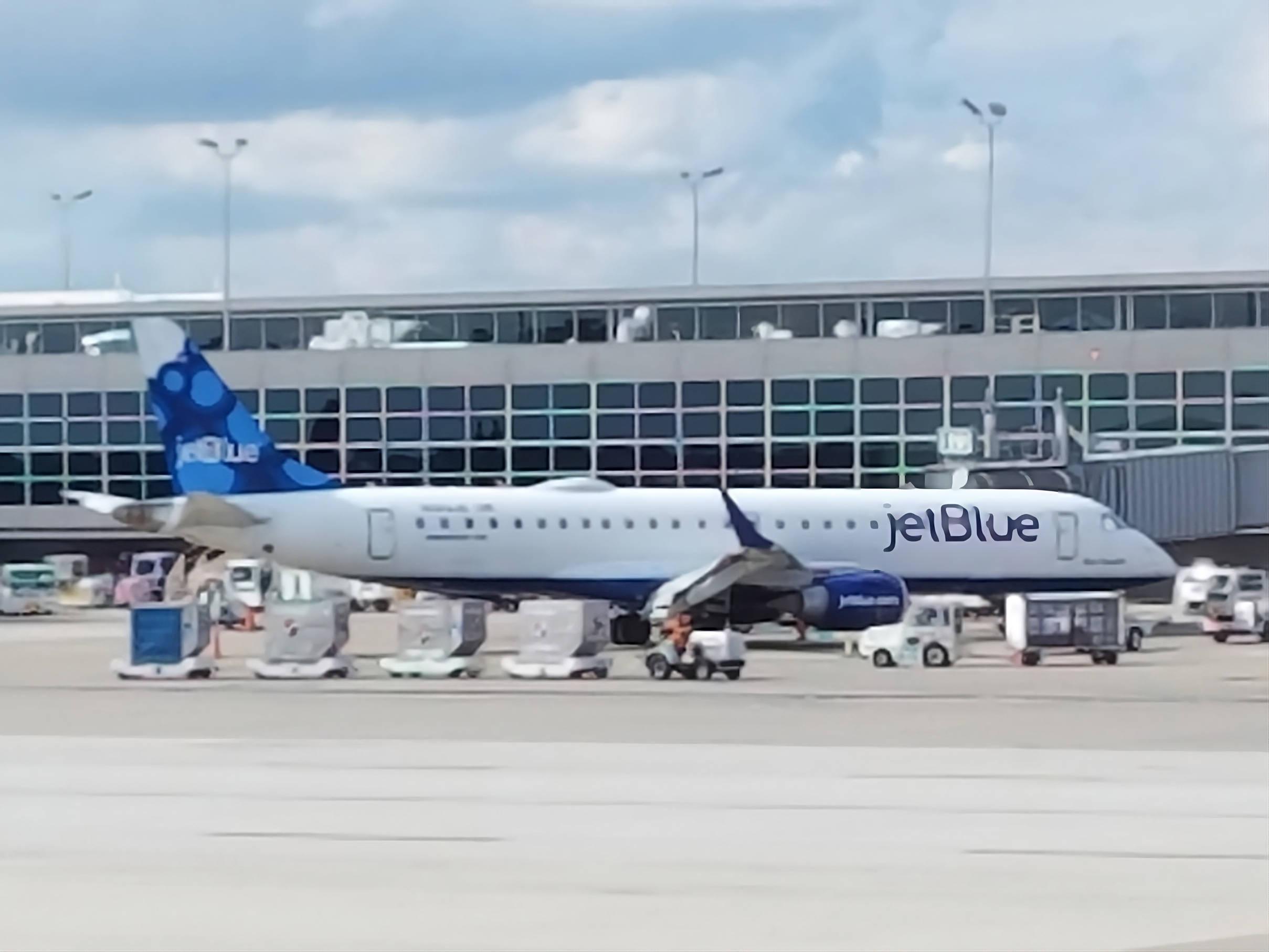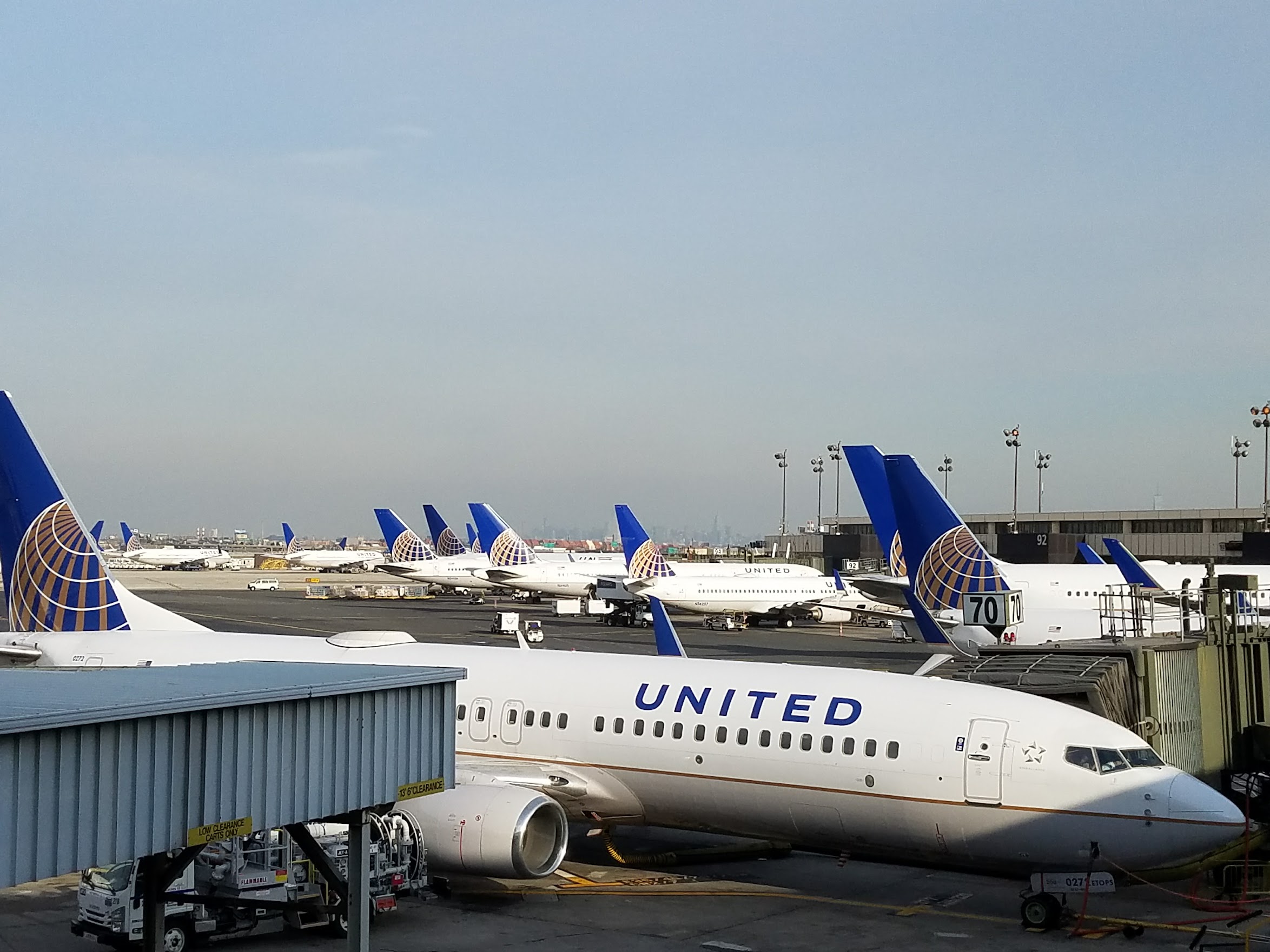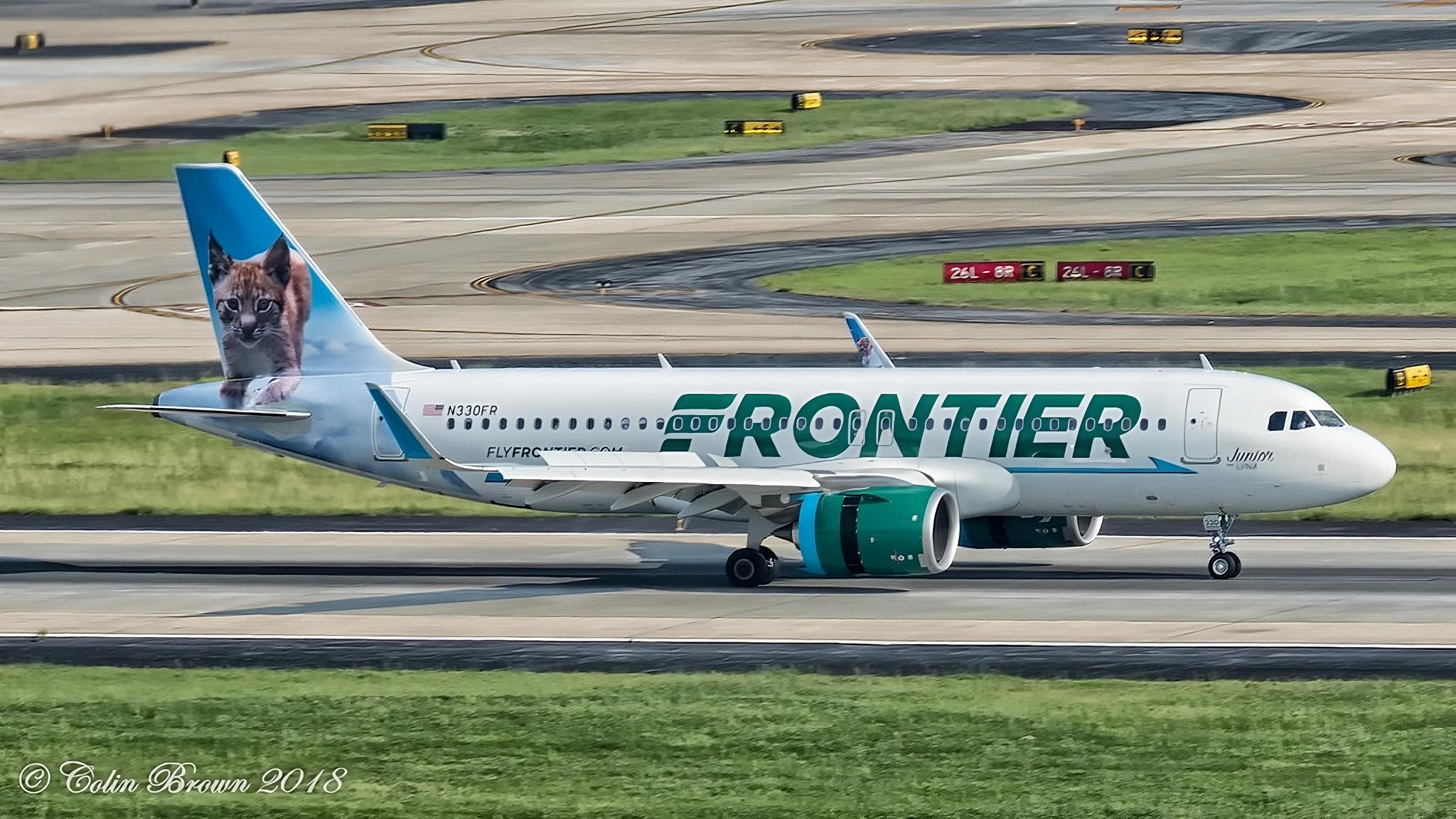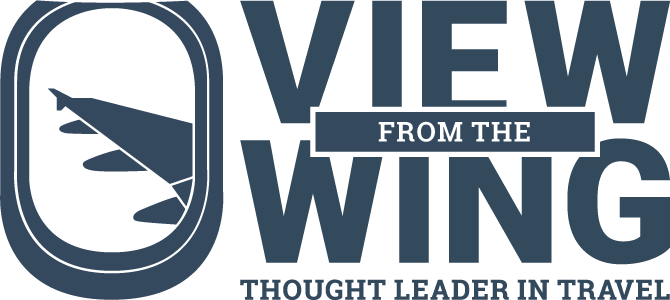Before the pandemic, Spirit Airlines and Frontier were the fastest growing carriers and Spirit was the most profitable. American Airlines CEO Robert Isom was President at the time and tried to orient American’s strategy around competing against them rather than against Delta.
Much has changed since then! Frontier has struggled, and Spirit Airlines is in bankruptcy, after the Biden Department of Justice sued to block JetBlue from acquiring them. JetBlue wanted their pilots and planes to grow as a result of their partnership with American Airlines, which the Biden administration also blocked. Now JetBlue is struggling to regain its financial footing, too.

United’s Scott Kirby has been predicting the demise of low cost competitors for years. So far he hasn’t been wrong. On Wednesday morning’s earnings call, he placed the blame for this on the airports and the federal government as he explained why his airline would outcompete them in the major cities where they have their biggest operations.
I just don’t see how it’s possible to be a low-cost carrier and fly profitably to the New York Airports or Chicago or Los Angeles or San Francisco. The business model just doesn’t work because the government and those entities have priced low-cost carriers out of the market. And it’s just math. …[T]he only way to solve that is to not fly it. That doesn’t mean they’ll do it overnight. There will be some ups and downs along the way. There’ll be ego involved in that. But ultimately, it is math and it is going to come out because it cannot be profitable.
Airport costs in major cities are high. But that’s not the only high cost of flying in the Northeast. Congested airports mean greater taxi time, and congested airspace also means that flights take longer. You cannot operate as many flights with an aircraft in the Northeast as you can a similar-distance route elsewhere in the country, and you can’t turn planes around on the ground as fast either.
While Kirby has lobbied for significant increases in funding for the FAA’s Air Traffic Organization, because he has a hub at Newark (United’s most profitable!) and is significantly affected by understaffing there, it also helps with his airline’s moat. It’s much harder for ultra-low cost carriers to compete with low costs in places like Newark, but also to a lesser extent the other major cities where United hubs as well (other than, perhaps, Houston).

United Airlines at Newark
Low cost carriers get their low costs primarily by having simple operations, that require fewer people, and by being in a position to pay those people less. Here are the (3) biggest expense buckets for an airline:
- Planes won’t be a long-term source of lower cost. Planes basically cost the same for low cost and full service aircraft. If anything, larger carriers placing larger orders can get bigger discounts.
An new airline might pick up just a few planes cheap, and that helps a startup carrier but wouldn’t move the needle for an airline with a fleet of 1,000.
They might also get undervalued, disfavored aircraft cheap and gain a cost advantage there for a time but that’s a cost benefit that will ultimately erode as it grows the fleet and replaces planes.
- Fuel won’t be a long-term source of lower cost. Jet fuel moves with the price of oil, and that price is set on the global market. An airline might separately have a strong trading capability and outperform commodities markets, as Southwest Airlines did for a time. That’s less likely for a smaller upstart. And even Southwest’s vaunted hedging benefit didn’t last.
- Labor eventually gets more expensive. This is the area where low cost carriers get a lot of their low costs. They’re newer and may not be unionized. They are hiring junior folks who haven’t moved up a seniority scale yet. They keep a simpler operation and don’t need as many people to run their operation.
Over time, though, airlines unionize, crew gain seniority, and what’s happened in recent times is that the pandemic drove up wages. Spirit Airlines started paying pilots a lot more, for instance.

Airlines also outgrow their low cost model. They fly a handful of routes that largely airlines ignored, or they undercut those larger airlines on price with a handful of flights on routes where they compete directly. But there are only so many unexploited opportunities and eventually they find they’ve tapped all of those.
Then, in order to keep growing, they need to try to appeal to different customers with different products. They need a more complicated fleet to serve more markets, which means higher maintenance, training, and staffing costs. They need different on board products. And each of these changes entails higher costs, eroding the cost advantage.
Meanwhile, since the pandemic, ultra-low cost carriers have faced another challenge in the United States: a revenue problem. Passengers have increasingly wanted nicer products, and they’ve wanted to travel abroad (especially Europe).
Ultra-low cost carriers haven’t had the premium products that people wanted to buy. They haven’t served the places that people wanted to go (and don’t have fleets capable of doing so). And they haven’t had partnerships that would have allowed them to sell those tickets and share in revenue, either. (Those partnerships incur costs, such as interlining baggage.) So it’s a cost and a revenue problem both.

The federal government and local airports are driving up the cost of flying. That is bad for airline bottom lines, but it also harms low cost carriers most because it hurts their relative low cost compared to their larger competitors. This makes flying costlier to do, which drives up fares. And it drives low cost carriers out of the market, which drives up fares.
Think about that the next time you want to impose even more costs on airlines, or hear a politician complaining about high fares.


Do frequent fliers like low-cost or ultra-low-cost-airlines? It seems to me that they nickel and dime their customers to death. I far prefer the legacy carriers.
The eroding of the point system by the big 3 will hurt them significantly. It’s just beginning to take effect. The hotels now force you to pay cash along with points in special days. I can’t wait for the legacy airlines to follow suit. They’ll piss if their top fliers. Sorry the flight costs you 20k points plus 200 bucks even though you have 400k points. Just wait, the scam point system will be coming home to roost!
I presume the oligarchs and their bootlickers are pleased. Probably sounds a little something like this: “Good riddance! The ‘poors’ shouldn’t be flying anyway. Walk, swim, or take a bus! Muwahaha.”
Southwest’s lowest fares have increased dramatically in 2025. I have observed much lower loads on my flights. If this persists, that will imply that Southwest believes the higher fares are a net financial benefit.
In 2026 Southwest’s customers will lose the open seating that many of us enjoy and exploit. If 2026 fares are still high, we will definitely shop around for the cheapest middle seat.
It’s just hard to run a low cost airline over the long term. “Cost” as a competitive advantage is unsustainable unless the plan is to eventually kill the operation and scrap it for the parts – i.e., what should have happened to Spirit. Also, someone else is always going to have lower costs than you. My guess is Houston-Monterrey has a lower cost to operate for Viva than Spirit.
I agree with Kirby that government is to blame:
Landing slots need to be on a ten year lease rotation rather than being some eternal prize for an airline to hoard like a dragon on a pile of gold.
Foreign ownership of airlines need to be encouraged rather than forbidden.
The government allows fortress hubs. Why not require any airport with over 100 flights a day to make half the flights with a non-dominant airline.
These simple moves by the government would instantly foster competition.
He has been saying this for years. He is obsessed with Spirit and Frontier.
@big front, the points system is forced to evolve because of the commoditization of points. Used to be it took you a long time to accrue 25,000 points to get a free domestic ticket. Now, with all the different cards and points (4x on restaurants, 6x on groceries) those miles pile up faster and faster. And costs have risen since 2000… what else can you buy for the same price you could 25 years ago? People love to hate the changing reward structure, but I amass multiples more points than I ever did back then.
The other big issue with large airports is that it’s impossible to have quick turn times unless you do a JetBlue and have your planes constantly run late with impossible 40 minute turns. An airport like ISP a plane won’t need more than 15 minutes, 20 minutes max, for taxi in and out. Try that at DFW, JFK, ORD, MIA. Then there’s the impact of weather/ATC on larger airports. ULCC need to have maximum utilization of planes which means quick turn times.
As soon as ULCCs start to get big into large airports costs rise and they lose their cost advantage. ULCC do not have other significant profitable sources of non flying revenue. So they twist on the vine trying to make a profit on fares and fees.
All legacy carriers are owned by the same hedge funds. They do not allow real competition. No sympathy here
The airline industry is mostly a public utility service and should be regulated as such, much like gas and electric services. Bring back the CAB.
Remember, we used to have more competition but everyone blended red ink since deregulation. Having scale and hub monopoly advantage is the only way to make money today but is by default anti-competition.
Scott is worried about the wrong things.
He is obsessed with Spirit and Frontier and always has been because they were the most profitable airlines in the US before the pandemic. Whatever everyone seems to leave out of the discussion is the reason that the ULC‘CS are in the state they are in is because the big three legacy carriers lost their primary business sectors during the pandemic, which was business and international travel, and instead had to start offering basic economy and competing in the ULCCs in their sandbox.
ULCCs have forced the other airlines to keep their prices in check. If they go bankrupt, expect ticket prices to rise. Even those travelers who don’t use them should be happy that they are a force in the market.
Obviously United Airlines is doing well enough to donate $1 million to Trump’s Inauguration Committee and for Kirby to attend:
https://www.reuters.com/business/aerospace-defense/united-airlines-donates-1-million-trump-inaugural-fund-2025-01-17/
I disagree that ULCCs get unfavorable aircraft. Spirit and Frontier have the youngest, most desirable A320neo family, which even Mr. Kirby has dreamed of owning at some point before securing some for his airline.
ULCCs act as guarantors on the market, driving fares to more affordable rates for legacy carriers, which Kirby hates. He wants more money for his shareholders to get bragging rights of the most profitable airline, which currently goes to his nemesis, Delta.
I have news for him, ULCCs are here to stay. Yes, maybe more consolidation is to come (soon) and down to one, or two airlines but they are here to stay for us who do not mind no frills and all we need is a cheap fare to our vacation spots or visiting families. As long as we keep flying, they will remain and force legacies to drive down their rates.
Pretty good recap, Gary. The one missed point that jumped out at me is the link between your #1 (Aircraft) and @2 (Fuel). The upward curve in fuel efficiency (gallons per seat mile or liters per 100km per passenger) has been truly impressive, due to advances in both aerodynamic efficiency and engine efficiency. It’s fundamentally changed the game, with the result that relatively new aircraft are being shipped to the desert because the fuel savings can literally pay for the newer aircraft. This can help or hurt the balance between the legacy carriers and the ULCC’s, for sure there are pros and cons each way.
His “interest” in the airport costs that ULCCs pay at big hubs is all about whining about the costs that UAL is paying at its hub airports; UA pays more in airport costs per passenger than any other US airline.
Anonymous,
You are 100% correct
American, Delta and United, are not making money flying airplanes. They’re only making money with their credit card loyalty programs paying huge interest. As soon as all that stops. They could be in a similar situation as Spirit and frontier. By the way. Spirit is not in their current financial position because of any merger attempt that didn’t happen. Mainly due to the Pratt & Whitney engine issues.
I’m not clear why the government is at fault for ULCC’s costs specifically (vs UA etc) in big cities? Doesn’t everyone pay the same fees/taxes/rates?
@ Lance
You are missing a key point flying/ticket costs that get you those 25k miles have gone up!
Scott Kirby is POS more concerned with nickel and diming passengers, cutting corners on maintenance and product, and minimizing service.
He’s openly advocating for 18hr workdays for his employees without a significant pay increase or improved work environment
Tim, for airlines like UA, the extra airport costs are ok if they make enough revenue in those cities to make up for the costs. UA is able to price for premium seats, plus they will be renegotiating revenue agreements with credit card partner Chase, bringing in billions more in revenue. Major tailwinds coming for UA.
Frontier and Spirit don’t make that extra revenue and don’t get billions in revenue from credit card partners.
There were zero examples of how the federal government increases the costs for discount airlines. Would you give some?
@Anon – did you read what I wrote?
First, local government-owned airports in major cities have gotten very expensive to operate at. And as for the federal government, they directly operate air traffic control, and throughput issues make it difficult to operate efficiently which is necessary for the ULCC model.
It appears the Euro ULLC are making money!!
Therefore, Spirit & Frontier could follow their lead:
– crews based at low cost airports
– flight banks from these airport (in & out, no hop scotching all over the country)
– increased reliability, frequency and dependability
– services more clearly defined in line with expectations
– gift a new patrol car to the local police chief; therefore, PAX know to behave while on board (more of a North American concept)
@Paper Boarding Pass
What you forget is that the EU actually cares about people over profits sometimes (‘the greater good’); whereas, in the USA, we’re rugged individualists, (cowboys, mavericks, etc.). Here, commercial aviation is not a service so much as it is an investment (sorry, I meant, wealth extraction via exploitation of labor and public resources) for the sole benefit our oligarchs.
*incoming ‘stock buybacks’ and airline mergers*
We are living the game Monopoly, and most of us are losing, bigly (or is it Big League?).
This is all because of (queue the suspense music)……BOEING!!!!
Mark,
of course UA can cover its costs at major airports but AA, WN and DL simply have lower cost hubs and UA’s interest in lower airport costs is directly because they compete against AA, DL and WN for all of that connecting traffic which UA says it will use to build its domestic network.
If AA and UA pay $30-40 per passenger to connect over ORD and DL pays 1/3 that amount at its hubs, then DL has the advantage. It is not rocket science.
ATL is simply the most cost effective large hub in the country and far surpasses the connectivity of any of AA or UA’s hubs
When you fly low cost, it basically cost more the the major big 3, after paying for everything.
I can’t wait for the airlines to add a surcharge to point tickets, it’s about time they stop getting abused by cheap passengers who want everything with their free ticket.
Worked for CAL 32 years UAL for 10 years at CAL we had Bethune who was the best CEO in my aviation career, had Kirby the last few years, no way near as proficient as Bethune, today they are making record profits with the F/A’s without a current contract along with the ground staff and ticket agents, record profits they give 5% profit sharing DAL AMR double, DEI was exclusive at UAL, Kirby is not a good Leader!’
Tim, and yet UA has essentially matched DL earnings, without the upcoming tailwind of billions of extra credit card revenue dollars.
The “more efficient” hubs don’t always come with the revenue premiums generated in top business centers.
If one or the other of the ULCCs goes belly up there would be a nice fleet of A320neo aircraft that UA could acquire quickly.
I would wonder if gate squatting is part of the problem… it’s time for common-use gates.
Meanwhile United’s profit sharing is half what it was last year even though they made more money. This supposed genius is creating more ill will with a group of employees that is already ready to strike because their contract is way overdue.
Kirby’s a cross dressing cuck. Maybe worry about That hard landing in iah from your DEI hires or that trip 7 that was close to going in the drink a couple years ago.
United is primed for an accident unfortunately.
There’s a lot to unpack here. Kirby is looking after the interests of United Airlines, that’s all.
Spirit over-leveraged dept which led to the unfortunate possibility they’re currently in. Frontier, on the other hand, is currently back on track for double digit percent profitability for 2025.
Many insiders are predicting that Frontier will be making the Frontier/Spirit merger under the Trump administration a reality.
The ULCC market isn’t dead at all, especially Frontier. As they adjust to the dynamics of the landscape, Frontier/Spirit will likely grow into a domestic behemoth.